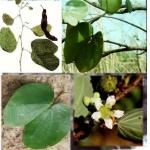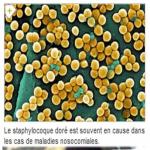Blog
-
High blood pressure
- By narso10
- On 2025-10-03
Nowadays, it is undeniable that high blood pressure is one of the most common chronic diseases in the world. Moreover, as people age, the likelihood of developing this condition increases significantly. Indeed, aging is accompanied by physiological changes that make the arteries less flexible and the regulation of blood pressure more difficult. Therefore, it is essential to understand not only why high blood pressure is particularly common among the elderly, but also .
Contact us for the necessary care and follow-up.
Click here to visit our store.
Old age and hypertension: an almost inevitable associationFirst of all, it is worth remembering that old age comes with a series of biological changes. On one hand, arterial walls gradually lose their elasticity. As a result, blood flows under higher pressure, which promotes hypertension. On the other hand, kidney function tends to decrease with age, thereby reducing the body’s ability to effectively eliminate excess salt and water. In addition, a sedentary lifestyle, often observed in elderly people, further increases this risk. At the same time, dietary habits rich in fats and salt, as well as the use of certain medications, can contribute to elevated blood pressure.
Contact us for the necessary care and follow-up. -
The lumbago: definition, causes, symptoms, and treatments
- By narso10
- On 2025-09-23
Lumbago natural remedy low back pain ; Low back pain, also known as lumbago or more simply back pain, is one of the most common reasons for medical consultations worldwide. Indeed, according to the World Health Organization (WHO), nearly 80% of individuals will experience at least one episode of lower back pain in their lifetime. However, this condition, although often benign and temporary, can in some cases become chronic and significantly impair the quality of life. How can we treat this pain naturally? Write to us directly via WhatsApp to benefit from our plant-based follow-ups.
Definition of low back pain
Low back pain refers to any pain localized in the lower back area, that is, at the level of the lumbar vertebrae. It can be acute, when it lasts less than six weeks, or chronic, when it persists beyond three months. Furthermore, it is important to emphasize that it can be specific, when a precise cause is identified (herniated disc, fracture, infection...), or non-specific, when no clear organic cause is found.
The main causes of lumbago
It is important to note that the origins of lower back pain are multiple. Thus, among the most common, we find:Mechanical disorders:Herniated disc.Lumbar osteoarthritis.Muscle contractures.Deformations of the spine (scoliosis, hyperlordosis).Lifestyle-related factors:Prolonged poor posture.Sedentary lifestyle.Heavy lifting.Overweight and obesity.
The traumatic causes of lumbago, lower back pain:Falls.
Road accidents.Sudden physical exertion.The rarer but serious causes:Spinal infections.Bone metastases.Chronic inflammatory diseases (ankylosing spondylitis).Thus, although a large proportion of lower back pains are benign, some require urgent medical attention.
-
Hemorrhoids and bleeding complication and bio solution
- By narso10
- On 2025-09-19
Hemorrhoids, also called piles, are swollen and inflamed veins located in the lowest part of the rectum and anus. They develop when the walls of these blood vessels stretch and become irritated due to increased pressure. Hemorrhoids that bleed complication and bio solution .
There are two main types:
Internal hemorrhoids – found inside the rectum; usually painless but may cause bleeding during bowel movements.
External hemorrhoids – found under the skin around the anus; they can cause itching, pain, swelling, and sometimes bleeding.
Please to join us to know more
Reade this product about hemorroids
When hemorrhoids start bleeding, it usually means that the swollen veins in the rectum or anus are fragile and rupture under pressure. While minor bleeding may not be dangerous, repeated or heavy bleeding can lead to complications such as:
Anemia – Chronic blood loss, even if small, can cause iron-deficiency anemia, leading to fatigue, weakness, and paleness.
Severe pain and inflammation – Especially if blood clots form (thrombosed hemorrhoids).
Infection – The anal area has many bacteria, so open hemorrhoids can become infected.
Rectal prolapse – Prolonged hemorrhoids can worsen, causing part of the rectum to protrude outside.
Misdiagnosis risk – Rectal bleeding may sometimes mask more serious conditions, like colorectal cancer or polyps.
Thus, persistent or heavy bleeding should never be ignored and requires medical evaluation.
Natural Solutions for Bleeding Hemorrhoids
There are several biological and natural remedies that can help reduce bleeding, inflammation, and recurrence:
1. Dietary Solutions
High-fiber foods (whole grains, oats, fruits, vegetables, legumes) soften stools and prevent straining.
Hydration – Drinking 1.5–2 liters of water daily keeps stools soft.
Avoid irritants – Cut down on alcohol, spicy foods, and processed meals.
2. Local Herbal Remedies
Aloe vera gel: Has soothing and healing properties; applying fresh aloe may reduce bleeding and irritation.
Witch hazel (Hamamelis virginiana): Applied topically, it acts as a natural astringent to shrink swollen tissue and stop bleeding.
Coconut oil: Anti-inflammatory and lubricating; helps reduce discomfort.
Turmeric paste: Its anti-inflammatory and antimicrobial effects may help healing.
3. Lifestyle Adjustments
Avoid prolonged sitting and constipation.
Practice gentle anal hygiene (lukewarm sitz baths for 10–15 minutes, 2–3 times/day).
Moderate exercise improves bowel function and circulation.
4. Natural Supplements
Flavonoids (Diosmin, Hesperidin, Rutin): Found in citrus fruits; strengthen blood vessels and reduce bleeding.
Horse chestnut extract (Aesculus hippocastanum): Improves venous tone and decreases swelling.
Butcher’s broom (Ruscus aculeatus): Enhances blood circulation in hemorrhoidal veins.
Please to join us to know more
-
Tubular phimosis African remedy
- By narso10
- On 2025-09-09
Tubular phimosis African remedy; Tubal phimosis, also known as uterine phimosis, is a rare medical condition characterized by a narrowing of the end of the fallopian tube. This constriction can lead to complications such as infertility in women. How to naturally treat tubal phimosis and what advantages it has over modern treatments. Please contact us, call +2290160081765.
Symptoms of tubal phimosis
The symptoms of tubal phimosis can vary depending on the severity of the constriction of the fallopian tube. Some of the most common signs include pelvic pain, abnormal vaginal bleeding, difficulty conceiving, recurrent genital tract infections, and irregular periods.It is important to note that some women with tubal phimosis may not exhibit any visible symptoms, making the diagnosis of the condition more challenging.










